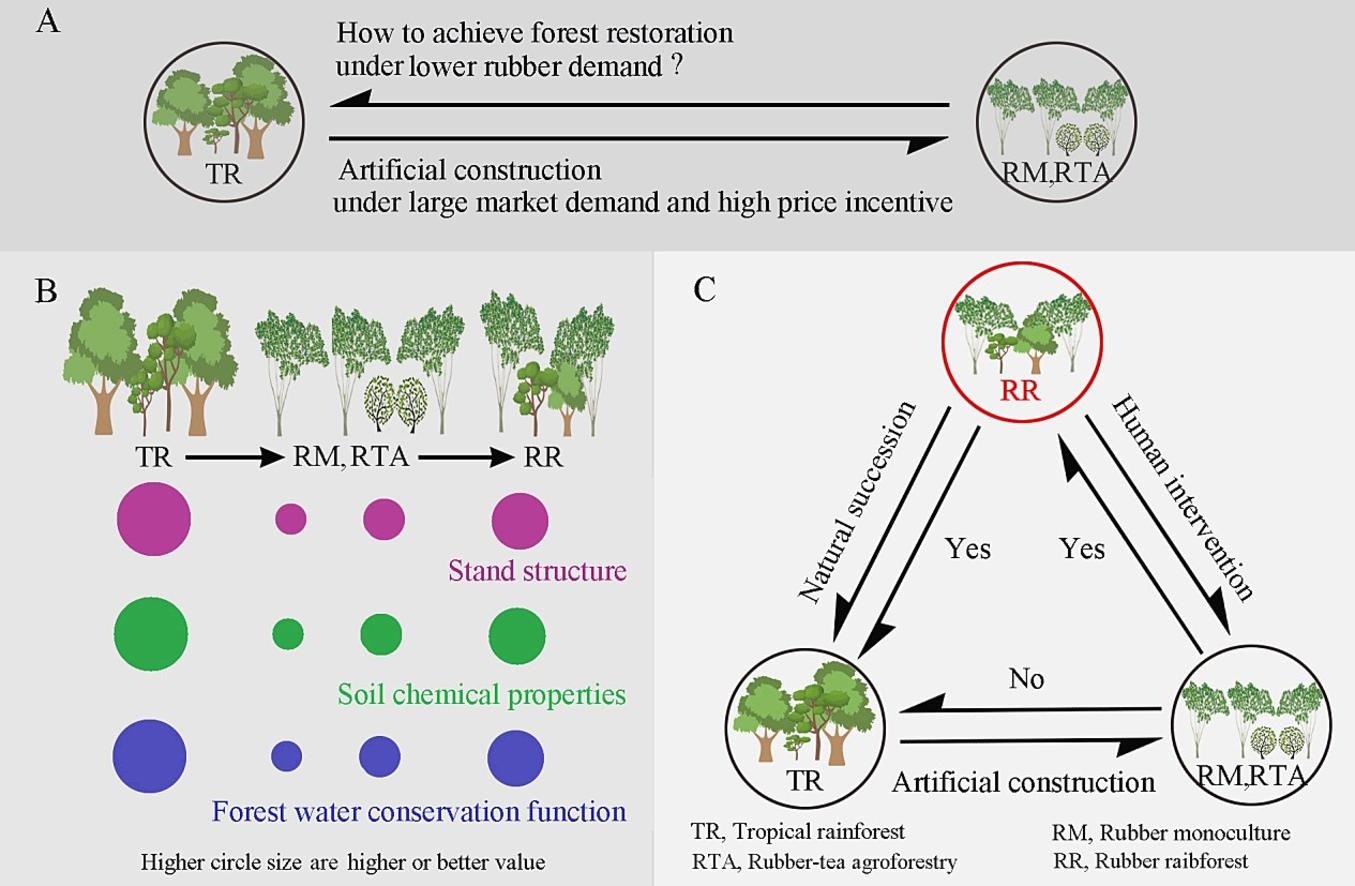
The deterioration of soil and water resources resulting from tropical rainforest conversion to monoculture plantations (e.g., rubber monoculture; RM) could be mitigated and restored through intercropping. However, few studies have provided useful guidance on how to restore RM or mixed rubber plantations to rubber rainforest (RR: derived from the invasion of wild native plants into abandoned RM).
In a study published in Geoderma, researchers from the Xishuangbanna Tropical Botanical Garden (XTBG) of the Chinese Academy of Sciences investigated the changes in soil properties and forest water conservation function during the forest conversion (from tropical rainforest to rubber monoculture, from rubber monoculture to rubber-tea agroforestry, from rubber-tea agroforestry to rubber rainforest, and from rubber rainforest back to tropical rainforest) in the humid tropical region of Xishuangbanna, China.
The researchers found that soil physical and chemical properties were interrelated, and many of these relationships were mediated by water flow behavior. Soil physical and chemical properties followed the decreasing order of tropical rainforest > rubber rainforest > rubber-tea agroforestry > rubber monoculture.
"Therefore, the degraded soil under rubber monoculture converted from tropical rainforest could be greatly restored by converting it to rubber rainforest and then to a climax stage of tropical rainforest after several years of natural succession," said JIANG Xiaojin of XTBG.
They also found that the water supply capacity decreased in the following order throughout the year: tropical rainforest > rubber rainforest > rubber-tea agroforestry > rubber monoculture. As a result, water stress occurred in rubber monoculture but was mitigated in rubber-tea agroforestry and rubber rainforest.
Therefore, when converting forests, the potential effects of water flow behavior on soil properties and forest water conservation function should be considered.
"Our study highlights that the rubber rainforest appeared as a transitional stage in the process of forest restoration from rubber monoculture to tropical rainforest under low rubber demand," said CHEN Chunfeng of XTBG.

Achieving forest restoation under lower rubber demand. (Image by JIANG Xiaojin)

86-10-68597521 (day)
86-10-68597289 (night)

52 Sanlihe Rd., Xicheng District,
Beijing, China (100864)

